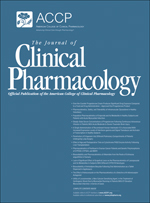
“Defects in myelin homeostasis have been reported in many neuropathological conditions. Cannabinoid compounds have been shown to efficiently promote myelin regeneration in animal models of demyelination. However, it is still unknown whether this action relies mostly on a cell autonomous effect on oligodendroglial-lineage-NG2 cells.
By using conditional genetic mouse models, here we found that cannabinoid CB1 receptors located on NG2 cells are required for oligodendroglial differentiation and myelin regeneration after demyelination. Selective CB1 receptor gene depletion in NG2 cells following toxin-induced demyelination disrupted oligodendrocyte regeneration and functional remyelination and exacerbated axonal damage. These deficits were rescued by pharmacological blockade of the RhoA/ROCK/Cofilin pathway.
Conversely, tetrahydrocannabinol administration promoted oligodendrocyte regeneration and functional remyelination in wild-type but not Ng2-CB1-deficient mice.
Overall, this study identifies CB1 receptors as essential modulators of remyelination and support the therapeutic potential of cannabinoids for promoting remyelination in neurological disorders.”
https://pubmed.ncbi.nlm.nih.gov/39528076/
“Cannabinoids have been shown to modulate myelin development and regeneration in mice. Here, using OPC-specific reporter mouse lines in combination with models of toxin-induced demyelination, we found that CB1 receptors located on NG2 cells, by modulating RhoA/ROCK/cofilin and mTORC1 signaling in a coordinated manner, exert an essential function in controlling NG2 cell differentiation, OL regeneration, myelin regeneration and functional recovery following demyelination, thus supporting the therapeutic potential of cannabinoids for promoting remyelination in neurological disorders.”
https://www.sciencedirect.com/science/article/abs/pii/S0301008224001199?via%3Dihub




 “The Endocannabinoid System (ECS) is primarily responsible for maintaining homeostasis, a balance in internal environment (temperature, mood, and immune system) and energy input and output in living, biological systems.
“The Endocannabinoid System (ECS) is primarily responsible for maintaining homeostasis, a balance in internal environment (temperature, mood, and immune system) and energy input and output in living, biological systems.  “Neonatal hypoxia-ischemia (HI) is a risk factor for myelination disturbances, a key factor for cerebral palsy.
“Neonatal hypoxia-ischemia (HI) is a risk factor for myelination disturbances, a key factor for cerebral palsy.


